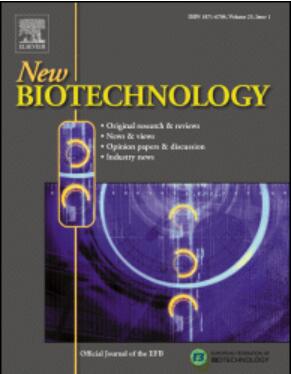白腐和褐腐真菌中CAZy酶的比较转录组学:木质纤维素降解的进化见解和GH16糖苷水解酶功能分化的相关性
IF 4.9
2区 生物学
Q1 BIOCHEMICAL RESEARCH METHODS
引用次数: 0
摘要
白腐菌(WRF)和褐腐菌(BRF)通过不同的机制分解植物生物量的主要结构成分木质纤维素。本研究研究了以杨木(W)和葡萄糖(G)为唯一碳源生长的3种WRF物种(Pleurotus ostreatus、Phanerochaete chrysosporium和Heterobasidion irregulon)和2种BRF物种(Fomitopsis schrenkii和Rhodonia胎盘)的转录组反应。RNA-seq分析显示与木质纤维素降解相关的碳水化合物活性酶(CAZymes)上调。WRF显示了更广泛的酶库,而BRF采用了更有选择性的方法。在这些反应中,GH16糖苷水解酶在所有物种中一致上调,包括BRF。由于GH16酶参与植物半纤维素修饰和细胞壁重塑,其木材诱导的表达可能反映了多个过程,而不是单一的木材腐烂机制。结构和系统发育分析显示了物种特异性分化,与潜在的功能特化一致。这些发现拓宽了我们对真菌酶促策略的理解,并突出了GH16酶作为进一步研究的候选酶。除了木材腐烂的直接背景外,这项工作对真菌生态学、进化生物学和生物技术应用(如生物质转化和可持续生物能源)具有更广泛的影响。本文章由计算机程序翻译,如有差异,请以英文原文为准。
Comparative transcriptomics of CAZy enzymes in white- and brown-rot agaricomycetes: Evolutionary insights into lignocellulose degradation and the relevance of GH16 glycoside hydrolase functional divergence
White-rot and brown-rot fungi (WRF and BRF, respectively) decompose lignocellulose, the main structural component of plant biomass, through distinct mechanisms. This study examines the transcriptomic responses of three WRF species (Pleurotus ostreatus, Phanerochaete chrysosporium, and Heterobasidion irregulare) and two BRF species (Fomitopsis schrenkii and Rhodonia placenta) grown on poplar wood (W) and glucose (G) as sole carbon sources. RNA-seq analysis revealed upregulation of carbohydrate-active enzymes (CAZymes) linked to lignocellulose degradation. WRF displayed a broader enzymatic repertoire, whereas BRF employed a more selective approach. Among these responses, GH16 glycoside hydrolases were consistently upregulated across all species, including BRF. Since GH16 enzymes are involved in both plant hemicellulose modification and cell wall remodeling, their wood-induced expression may reflect multiple processes rather than a single conserved wood-decay mechanism. Structural and phylogenetic analyses revealed species-specific divergence, consistent with potential functional specialization. These findings broaden our understanding of fungal enzymatic strategies and highlight GH16 enzymes as candidates for further study. Beyond the immediate context of wood decay, this work has broader implications for fungal ecology, evolutionary biology, and biotechnological applications such as biomass conversion and sustainable bioenergy.
求助全文
通过发布文献求助,成功后即可免费获取论文全文。
去求助
来源期刊

New biotechnology
生物-生化研究方法
CiteScore
11.40
自引率
1.90%
发文量
77
审稿时长
1 months
期刊介绍:
New Biotechnology is the official journal of the European Federation of Biotechnology (EFB) and is published bimonthly. It covers both the science of biotechnology and its surrounding political, business and financial milieu. The journal publishes peer-reviewed basic research papers, authoritative reviews, feature articles and opinions in all areas of biotechnology. It reflects the full diversity of current biotechnology science, particularly those advances in research and practice that open opportunities for exploitation of knowledge, commercially or otherwise, together with news, discussion and comment on broader issues of general interest and concern. The outlook is fully international.
The scope of the journal includes the research, industrial and commercial aspects of biotechnology, in areas such as: Healthcare and Pharmaceuticals; Food and Agriculture; Biofuels; Genetic Engineering and Molecular Biology; Genomics and Synthetic Biology; Nanotechnology; Environment and Biodiversity; Biocatalysis; Bioremediation; Process engineering.
 求助内容:
求助内容: 应助结果提醒方式:
应助结果提醒方式:


